Mode d’emploi Nomad Masai 2 TC Tente
Besoin d'un mode d’emploi pour votre Nomad Masai 2 TC Tente ? Ci-dessous, vous pouvez consulter et télécharger gratuitement le mode d’emploi PDF en français. Ce produit a actuellement 7 questions fréquemment posées, 0 commentaires et a 1 vote avec une note moyenne du produit de 100/100. Si ce n'est pas le mode d’emploi que vous souhaitez, veuillez nous contacter.
Votre produit est défectueux et le mode d’emploi n’offre aucune solution ? Rendez-vous à un Repair Café pour obtenir des services de réparation gratuits.
Mode d’emploi
Loading…


Loading…
Évaluation
Dites-nous ce que vous pensez du Nomad Masai 2 TC Tente en laissant une note de produit. Vous voulez partager vos expériences avec ce produit ou poser une question ? Veuillez laisser un commentaire au bas de la page.En savoir plus sur ce mode d’emploi
Nous comprenons qu’il est agréable d’avoir un mode d’emploi papier pour vos Nomad Masai 2 TC Tente. Vous pouvez toujours télécharger le mode d’emploi depuis notre site Web et l’imprimer vous-même. Si vous souhaitez disposer d’un mode d’emploi original, nous vous recommandons de contacter Nomad. Ils pourront peut-être fournir un mode d’emploi original. Recherchez-vous le mode d’emploi de votre Nomad Masai 2 TC Tente dans une autre langue ? Choisissez votre langue préférée sur notre page d’accueil et recherchez le numéro de modèle pour voir si nous l’avons disponible.
Caractéristiques
| Marque | Nomad |
| Modèle | Masai 2 TC |
| Catégorie | Tentes |
| Type de fichier | |
| Taille du fichier | 0.31 MB |
Tous les modes d’emploi pour Nomad Tentes
Plus de modes d’emploi de Tentes
Foire aux questions sur Nomad Masai 2 TC Tente
Notre équipe d’assistance recherche des informations utiles sur les produits et des réponses aux questions fréquemment posées. Si vous trouvez une inexactitude dans notre foire aux questions, veuillez nous le faire savoir en utilisant notre formulaire de contact.
Puis-je ranger ma tente lorsqu’elle est humide ? Vérifié
Seulement pour de très courtes périodes. Lorsqu'une tente est rangée alors qu’elle est humide pendant une semaine ou plus, elle peut moisir. C'est préjudiciable pour votre tente et peut-être pour votre santé.
Cela a été utile (395) En savoir plusComment imprégner une tente ? Vérifié
Installez la tente, nettoyez la toile et laissez-le sécher. Appliquez le produit d’imprégnation sur la toile à l’aide d’un pulvérisateur à plantes ou d’un autre pulvérisateur. Il est également possible d’utiliser un rouleau à peindre ou un pinceau. La toile doit être complètement saturée avec l’agent d’imprégnation. Traitez également l’intérieur de la tente. Nettoyez soigneusement les vitres avec un chiffon humide. Ne laissez pas l’agent d’imprégnation sécher dessus. Laissez la toile de tente sécher complètement. Répétez le traitement si nécessaire.
Cela a été utile (298) En savoir plusPuis-je réparer moi-même une déchirure ou un trou dans la toile de ma tente ? Vérifié
Pour les toiles de tente synthétiques, il existe des pièces de tissu autocollantes spéciales pour les toiles de tente. Coller l’une de ces pièces de chaque côté du trou ou de la déchirure. Pour les toiles de tente en coton ou les toiles de tente en matériaux mixtes, il est préférable d’utiliser des patchs qui peuvent être repassés. Cela nécessitera un fer à repasser.
Cela a été utile (227) En savoir plusLa fermeture éclair de ma tente ne fonctionne pas bien, que puis-je faire ? Vérifié
Lorsqu’une fermeture éclair ne fonctionne pas bien, utilisez un vaporisateur sec de PTFE ou de silicone. Ne vaporisez pas sur la toile et vaporisez préventivement pour éviter de futurs problèmes.
Cela a été utile (168) En savoir plusIl y a des gouttes d'eau à l'intérieur de la tente, cela signifie-t-il qu'il y a une fuite ? Vérifié
Non, il s'agit probablement de condensation. Assurez-vous que la tente soit correctement ventilée pour minimiser la condensation.
Cela a été utile (142) En savoir plusQuels piquets de tente sont les meilleurs à utiliser pour quelles surfaces ? Vérifié
Sur les surfaces herbeuses ou forestières, vous pouvez utiliser des piquets semi-circulaires ou en plastique. Sur les surfaces rocheuses, vous avez besoin d’utiliser des piquets de roche. Sur les surfaces en argile, vous pouvez utiliser des piquets semi-circulaires, en plastique ou universels. Sur les surfaces en gravier, vous avez besoin de piquets semi-circulaires ou universels et sur le sable, vous devez utiliser des piquets en bois.
Cela a été utile (116) En savoir plusLe produit d’imprégnation laisse des taches blanches ou un voile blanc sur la toile de tente, que puis-je faire ? Vérifié
Si l’agent laisse un voile blanc ou des taches blanches sur la toile de tente, cela signifie que vous avez appliqué plus d’agents d’imprégnation sur ces zones. Cela n’est pas nocif et les taches disparaissent souvent avec le temps. Il n’est pas conseillé d’utiliser moins d’agents d’imprégnation pour éviter les taches. La toile doit être complètement saturée avec l’agent d’imprégnation pour donner de bons résultats.
Cela a été utile (109) En savoir plus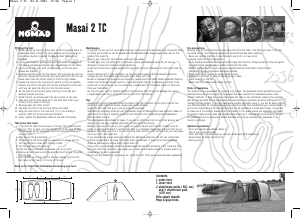

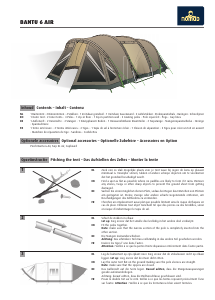
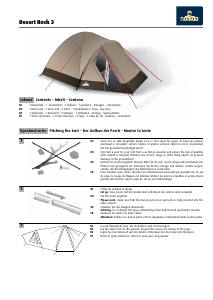

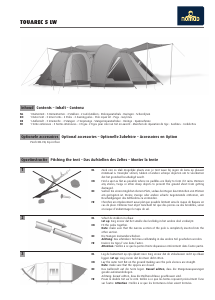

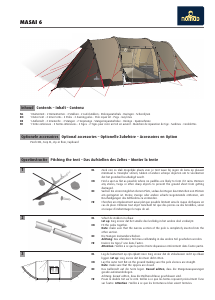
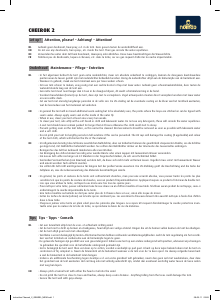

Joignez-vous à la conversation sur ce produit
Ici, vous pouvez partager ce que vous pensez du Nomad Masai 2 TC Tente. Si vous avez une question, lisez d’abord attentivement le mode d’emploi. La demande d’un mode d’emploi peut être effectuée en utilisant notre formulaire de contact.